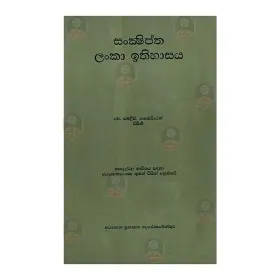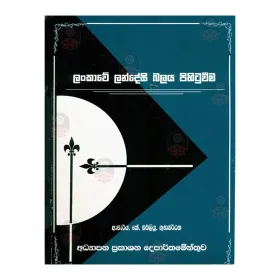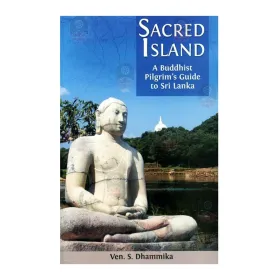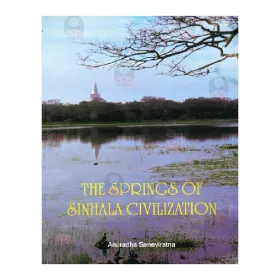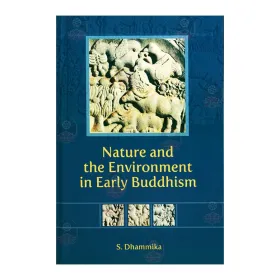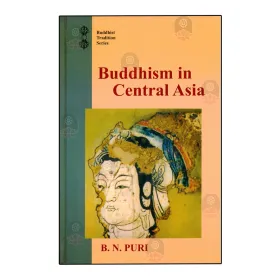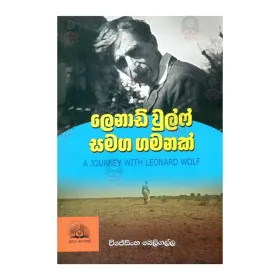Rs 167.00
History & Culture
There are 753 products.
Rs 132.00
Sundara Laosaya
සුන්දර ලා ඕසය - සංචාරය කිරීම සදහා ඉතා සුදුසුම රටක් වන ලාඕසය පිලිබදව දැනගත යුතු බොහෝ කරුණු, දැනගත යුතු බොහෝ ස්ථාන පිලිබද විස්තර ඡායාරූපද සහිතව ඉදිරිපත් කර ඇති සුවිශේෂී වූ කෘතියකි.
Rs 650.00
Sri Rawannaa Puwatha
Out-of-Stock
Rs 650.00
Vashishta Muni Samaga Paya Hathak
Out-of-Stock
Rs 350.00
Maha Kalasena
මහා කාලසේන - මෙම ග්රන්ථය ඉතිහාස ග්රන්ථයක් නොවුනත් වල දමා ඇති අපේ සැබෑ ඉතිහාසය මතුකරමින් ලියූ ඓතිහාසික නවකතාවකි. මෙහි එන සියලු චරිත මහාවංශයට, සිංහල බෝධිවංශයට හා ප්රකාශිත ලේඛනයන්ට අනුකූල වේ.
Rs 600.00
Middle Land Middle Way
Middle Land Middle Way - A comprehensive guidebook to the places in India made sacred by the Buddha’s presence. Beginning with an inspiring account of Buddhist pilgrimage, the author then covers sixteen places in detail. With maps and colour photos, an essential companion for pilgrim and traveler.
Rs 350.00
Sacred Island
Sacred Island - This travel and pilgrimage guidebook is meant primarily for Buddhists or those interested in Buddhism who wish to explore Sri Lanka’s rich cultural and spiritual heritage. Drawing on his extensive knowledge of the island, the author weaves together archaeological findings, art history and the stories and legends of the Buddhist tradition to bring to life thirty-three places of religious significance.
Rs 500.00
Buddhism In East Asia
Out-of-Stock
Buddhism In East Asia - Book Summary of Buddhism In East Asia An Outline Of Buddhism In The History And Culture Of The Peoples Of East Asia Buddhism in East Asia does not pretend to be the outcome of "fundamental research". Its main purpose is to collate, arrange and evaluate facts which specialists in the field have brought to light-and in such a way as to hold the general reader. There is little of critical apparatus and scholarly dissertation to confound him. In lively fashion, and with well-chosen illustrations to support his interest, the book takes him through a fascinating journey in time and space, through Ceylon, Burma, Siam, Cambodia, Vietnam, China, Chinese Turkestan, Japan and Tibet; it appraises the role and place of Buddhism in the different stages of their evolution in a broad and colorful sweep.
Rs 4,850.00
The Springs Of Sinhala Civilization
Out-of-Stock
The Springs of Sinhala Civilization - This is a treatise on the ancient system of irrigation that formed the core of Sinhala civilization during the Anuradhapura period of Sri Lanka by one of the foremost acknowledged masters of the subject.
Rs 975.00
Essayas In Archaeology
Out-of-Stock
Essays in Archaeology : In Honour of Professor H.T. Basnayake - A Collection of Essays by distinguished archaeologists on numerous archeologically relevant topics in honor of professor H.T. Basnayake.
Rs 1,250.00
Nature And The Environment In Early Buddhism
Nature and the Environment in Early Buddhism - Ven. S.Dhammika, an Australian Buddhist monk famous for many a Buddhist compilation, has written on the attitude which early Buddhism adopts towards the environment. How the environment should be treated by the Buddhist practitioner in the light of the rules imposed by the Buddha, that tend toward safeguarding the environment. Virtually, every aspect of the Buddhist attitude towards the environment is dealt herein.
Rs 325.00
Rs 4,500.00
King Asoka And Buddhism
King Asoka And Buddhism - A selection of essays by leading scholars of Indology assessing the contribution made by emperor Asoka towards promotion of Buddhism.
Rs 300.00
Indian Buddhism
Out-of-Stock
Indian Buddhism - This book describes the Buddhism of India on the basis of the comparison of all the available original sources in various languages. It falls into three approximately equal parts. The first is a reconstruction of the original Buddhism presupposed by the traditions of the different schools known to us. It uses primarily the established methods of textual criticism, drawing out of the oldest extant texts of the different schools their common kernel. This kernel of doctrine is presumably common Buddhism of the period before the great schisms of the fourth and third centuries BC. It may be substantially the Buddhism of the Buddha himself, though this cannot be proved: at any rate, it is a Buddhism presupposed by the schools as existing about a hundred years after the Parinirvana of the Buddha, and there is no evidence to suggest that it was formulated by anyone other than the Buddha and his immediate followers.
Rs 4,200.00
ANCIENT INDIAN EDUCATION
Out-of-Stock
ANCIENT INDIAN EDUCATION - This work is intended to fill up a gap in the literature on the history of Education, which has not taken adequate account of the unique contributions made by Hindu thought to both educational theory and practice.The work is divided into Two Parts. Part 1 (Chs. 1-12) deals with the concepts and practices of Brahmanical Education on the authority of Veda, Astadhyayi, Arthasastra of Kautilya, Sutra literature and Epics. It discusses the problems of Legal, Industrial and Vocational Education as well as the typical educational institutions and centres. Part II (Chs. 13-24) deals with the Buddhist Education and discusses among other topics the Background, System, Discipline, Centres of Instructions as well as the accounts of education derived from the Jatakas, Milinda Panha as also those rendered by Fa-Hien, Hiuen Tsang, I-Tsing and others.
Rs 8,300.00
Fundamentals Of Indian Philosophy
Out-of-Stock
Fundamentals Of Indian Philosophy - Dr. Puligandla deals with the essentials of Indian philosophy, emphasizing its methods, temper and goals while delving into specificities. Major schools of the philosophic tradition (Carvaka materialism, Jainism, Buddhism, Yoga, Vedanta among them) are thoroughly analyzed.
Rs 4,850.00
JESUS LIVED IN INDIA
Out-of-Stock
JESUS LIVED IN INDIA - His unknown life before and after the crucifixion. Why has Christianity chosen to ignore its connections with the religions of the East, and to dismiss repeatedly the numerous claims that Jesus spent a large part of his life in India? This compelling book presents irrefutable evidence that Jesus did indeed live in India, dying there in old age. The result of many years of investigative research, Jesus Lived in India takes the reader to all the historical sites connected with Jesus in Israel, the Middle East, Afghanistan and India. As well as revealing age-old links between the Israelites and the East, the evidence found by theologian Holger Kersten points to the following startling conclusions: In his youth Jesus followed the ancient Silk Road to India.
Rs 2,800.00
Indian Philosophy Vol - 1
Indian Philosophy Vol - 1 - This classic work is a general introduction to Indian philosophy that covers the Vedic and Epic periods, including expositions on the hymns of the Rig Veda, the Upanisads, Jainism, Buddhism and the theism of the Bhagvadgita. Long acknowledged as a classic, this pioneering survey of Indian thought charts a fascinating course through an intricate history. From the Rig Veda to Ramanuja, Radhakrishnan traces the development of Indian philosophy as a single tradition of thought through the ages. The author showcases ancient philosophical texts and relates them to contemporary issues of philosophy and religion. This second edition with a new Introduction by eminent philosopher J.N. Mohanty, highlights the continuing relevance of the work and the philosophic tradition it represents.
Rs 4,200.00
Indian Philosophy Vol - 2
Out-of-Stock
Indian Philosophy Vol-2 - This classic work is a general introduction to Indian philosophy that covers the Vedic and Epic periods, including expositions on the hymns of the Rig Veda, the Upanisads, Jainism, Buddhism and the theism of the Bhagvadgita. Long acknowledged as a classic, this pioneering survey of Indian thought charts a fascinating course through an intricate history. From the Rig Veda to Ramanuja, Radhakrishnan traces the development of Indian philosophy as a single tradition of thought through the ages. The author showcases ancient philosophical texts and relates them to contemporary issues of philosophy and religion. This second edition with a new Introduction by eminent philosopher J.N. Mohanty, highlights the continuing relevance of the work and the philosophic tradition it represents.
Rs 3,950.00
Buddhist Thought In India
Out-of-Stock
Rs 4,900.00
Buddhism In Central Asia
Out-of-Stock
Buddhism In Central Asia - Buddhism in Central Asia is a saga of peaceful pursuit by Buddhist scholars from Kashmir and Kabul to propagate the message of the Buddha. This vast region between the Tien-Shan and the Kunlun ranges was the centre of activities of these Buddhist savants. Here people of different races and professions, speaking many languages, were finally blended into a cosmopolitan culture. This created an intellectual climate of high order. In this context, the famous silk trade route was helpful in adding to the material prosperity of the people in this region. The present study, therefore, is not one of Buddhism in isolation. It equally provides an account of the political forces confronting each other during the course of history of this region for well over a thousand years. This has been helpful for a comprehensive study of Buddhism with its literature and art. The finds of hundreds of inscriptions have added to the cultural dimensions of the study.
Rs 4,000.00
Leonard Wolf Samaga Gamanak
ලෙනාඩ් වුල්ෆ් සමග ගමනක් - "බ්රිතාන්ය යටත් විජිත සේවයෙන් විශ්රාම ගෙන වර්ෂ 1911 දී ආපසු එංගලන්තයට ගිය ලෙනාර්ඩ් වුල්ෆ් ලෝ පතළ කීර්තිමත් ලේඛකයෙකු ලෙස 1960 දී හම්බන්තොට දැක බලාගැනිමේ අදහසින් නැවත ලංකාවට පැමිණෙයි. මේ ඔහුගේ ඒ සංචාරය පිළිබද කතාන්දරයයි."
Rs 1,600.00
Daughters Of The Buddha
It’s a common perception that the earliest textual records don’t contain many, if any, teachings by the Buddha’s female disciples; yet, this is not the case. In fact, the earliest discourses record a range of teachings from Buddhist women, lay and monastic. Unfortunately their important contributions have so far not received the attention they deserve. In Daughters of the Buddha, esteemed scholar-monk Bhikkhu Analayo examines the accounts of the first female disciples in the canonical scripture, taking the reader back to the earliest period in the history of Buddhism that can still be accessed today. He dedicates each of the twenty-one chapters in the volume to an individual and remarkable woman, sharing her particular insights and teachings with the reader. Both nuns and laywomen are featured in these pages, and their diversity of voices and richness of thought will serve as instruction and encouragement for modern scholars and practitioners alike.
Rs 10,400.00

